
In 2024, Unlock Your Device iCloud DNS Bypass Explained and Tested, Plus Easy Alternatives On iPhone 13 mini

Unlock Your Device: iCloud DNS Bypass Explained and Tested, Plus Easy Alternatives On Apple iPhone 13 mini
Have you bought a used iPhone or iPad with an active iCloud Activation Lock? Or perhaps you have an Apple device but cannot remember your iCloud password? Without activating iCloud, you cannot utilize locked devices in either scenario.
You might try contacting Apple customer service, but they won’t be able to assist you without user identification directly. Even after the Apple iPhone 13 mini device has been authenticated, you will still be bombarded with inquiries, and they may even want the original iOS device payment receipt.
One of the greatest free solutions to prevent these issues is to unlock your Apple iPhone utilizing iCloud DNS Bypass. Read on to know more in this iCloud DNS Bypass Guide.
Part 1: How Can We Use iCloud DNS Bypass for iOS Devices?
After a factory reset or restoration, every time you set up your iOS device, it will send an activation request to Apple’s servers. Apple responds to your request and displays your device’s status.
Additionally, if the Find My iPhone feature of your device is enabled, an iCloud Activation Lock screen will appear and prompt you for your iCloud account login information. The iCloud DNS Bypass can assist you if you forget your login information (Apple ID or password) or purchase a used device with an iCloud lock activated. It is a free approach to unlocking iCloud.
The readable names are transformed into numerical IP addresses via the Domain Name System (DNS). To launch the program, it makes use of a DNS server that serves as a host.
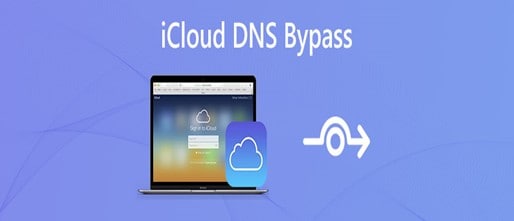
Use DNS to get around iCloud Server IP Address
You may first just ignore the iCloud DNS on your Apple iPhone 13 mini or iPad. The procedure is easy. Remember that the process must be completed by inserting the SIM card into your Apple iPhone 13 mini.
Step 1. Turn on your Apple iPhone 13 mini, then configure it according to the on-screen instructions.
Step 2. Select your language and nation. Click Continue to access the Wi-Fi settings screen after that.
Step 3. If prompted, click the I icon next to the Wi-Fi area.
Step 4. Click Connection Settings > Forget this Network to disconnect from the Wi-Fi network.
Step 5. When asked for a DNS server IP address, tap the I symbol to unlock the iCloud activation lock. Here is a list of places for your information:
USA: 104.154.51.7
155.28.90 Europe
Africa: 35.199.88.219
Asia: 104.155.220.58
189.47.23 Australia and Oceania
It is 78.100.17.60 on other continents.
Step 6. Turn on Wi-Fi and select the Wi-Fi network you wish to connect to by tapping the Back button on the left side of the screen. Enter your passcode after that.
Step 7. When you click Next Page > Back, the iCloud bypass page will appear.
Step 8. Use your device and configure your apps.

Use iCloud DNS Bypass Crash
- Step 1. The procedures below will help you delete iCloud after DNS bypass if you cannot utilize some features on your Apple iPhone 13 mini.
- Step 2. Tap Menu > Applications after attempting the aforementioned technique.
- Step 3. To restart your smartphone, scroll down and tap the Crash option.
- Step 4. Select “Language and Country” > Select a Wi-Fi network, click Home, More Wi-Fi Settings, Configure Proxy, and then Manual.
- Step 5. In the Server section, delete the existing HTTP address before entering 30 different emojis. Type 8888 into the Port area, then click Save at the top.
- Step 6. To access the Unlock screen, tap Back > Next. To unlock the Apple iPhone 13 mini device, press the Home button.
- Step 7. When the Home screen appears, tap the Language choice.
Part 2: The Best iCloud DNS Bypass Alternatives to Unlock Your Apple iPhone 13 mini/iPad/iPod Touch (Easy and Efficient)
Only if you bought a secondhand iPhone with an activation lock or want to restore the Apple iPhone 13 mini device but forgot that Find My iPhone was ever turned on do you need Dr.Fone - Screen Unlock (iOS) . Dr.Fone - Screen Unlock (iOS) is the most promising and user-friendly product of its sort currently available. With the help of this application, you can simply fix the iCloud activation issue. You don’t need to be an expert in utilizing the application because it is simple and intuitive.
Using Dr.Fone - Screen Unlock, you can get rid of the iCloud activation lock. Launch Dr.Fone and choose “Remove Active Lock” and “Unlock Apple ID” to unlock your iCloud. It still works if you have a used iPad or iPhone.
Dr.Fone - Screen Unlock (iOS)
Remove iCloud Activation lock without Password in Minutes
- Remove Apple ID/iCloud Account efficiently.
- Save your Apple iPhone 13 mini quickly from the disabled state.
- Free your sim out of any carrier worldwide.
- Bypass iCloud activation lock and enjoy all iCloud services
- Works for all models of iPhone, iPad, and iPod touch.
- Fully compatible with the latest iOS.

4,008,671 people have downloaded it
Here’s a step-by-step guide on how to use it
Step 1. Installing Dr.Fone on your smartphone and selecting Screen Unlock from the available options are the first steps in the procedure. You will note that there is a “iCloud Activation Lock Removal” option, among others, when you first use the Screen Unlock function. Simply clicking on it is all that is required.

Step 2. Before the bypassing process, please tape “Start”.

Step 3. After reaching the ‘Start’ page, Your Apple iPhone 13 mini’s specific information will be detected to determine the appropriate operation process. Ensure that the data cable is properly connected during this process. Jailbreaking is required for iOS devices running 12.0 to 14.8.1, but for iOS 15.0 to 16.3, simply enter DFU mode twice and proceed to unlock. For detailed instructions on unlocking, you can visit this detailed guide about iCloud Activation Lock Removal.
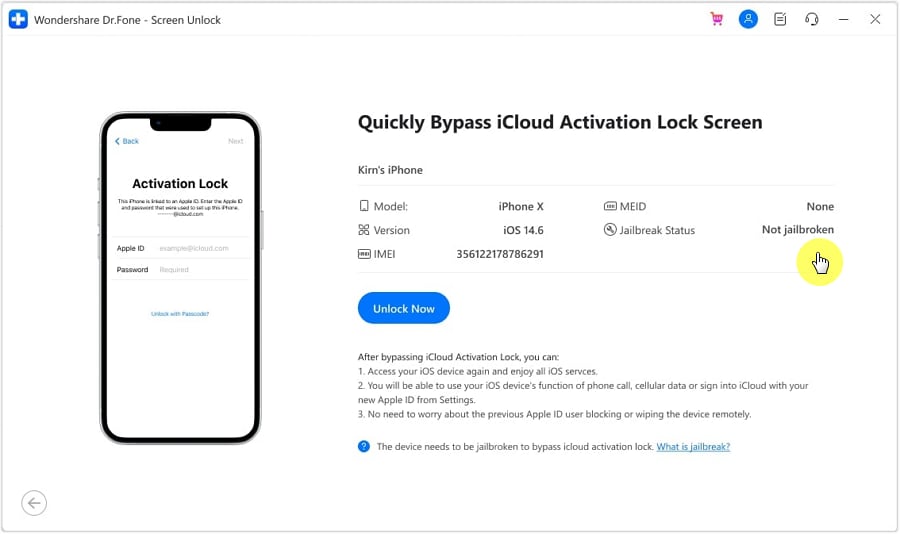
Step 4. Now we’re bypassing the activation lock, soon your Apple iPhone 13 mini will work without the activation lock.
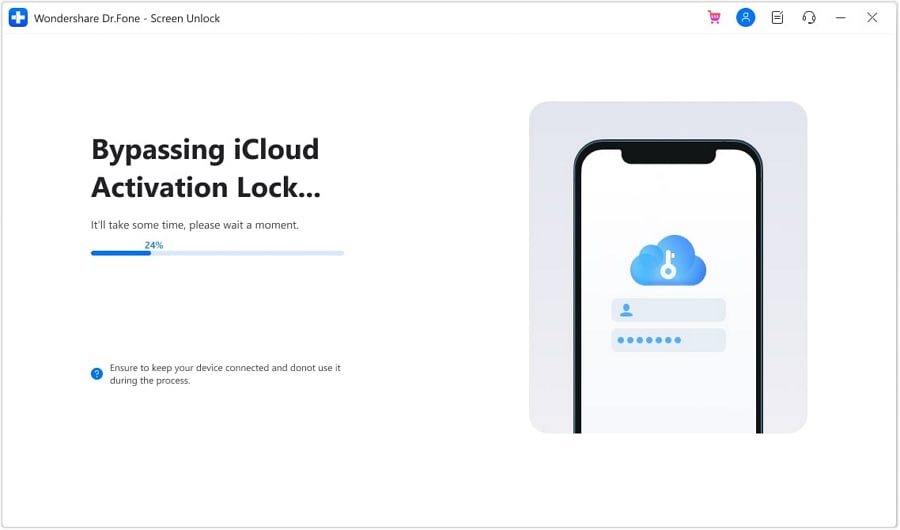
Part 3: FAQs
1. When Do We Require iCloud DNS Bypass?
We require it when our carrier locks our phone or when we buy a used phone and cannot use it because of an iCloud activation lock. The use of iCloud DNS bypass enables temporary access to the features and functionality of an iCloud-locked device. Domain Name Server, or DNS for short, serves the function of converting your domain names into IP addresses.
2. What Can iCloud DNS Bypass Do for Us?
When you need an urgent functioning solution for a locked iPhone, using iCloud DNS bypass is helpful since it gives you temporary access to all the features and configuration of an iCloud-restricted device. DNS, or domain name server, converts your domain names into IP addresses.
3. What are the Pros & Cons of iCloud DNS Bypass
This approach can be helpful, but it does have advantages and pitfalls of its own. These advantages and disadvantages are broken down as follows:
Pros
- You may use it without installing any software on the Apple iPhone 13 mini device, since you can do it in the Wi-Fi settings.
- The internet, camera, and games can all be used after the gadget has been engaged, making it simple to access.
- Utilizing this approach is cost-free.
Cons
- This technique only partially unlocks the Apple iPhone 13 mini device and represents a hack.
- The iCloud DNS bypassing technique has occasionally been reported as not working by users.
Conclusion
Now you have read all about iCloud DNS bypass, what is iCloud bypass DNS, whether DNS bypass is free, and how to iPhone DNS bypass, it is time to implement all the solutions and bear in mind that all DNS Bypass solutions are 100% free. Dr.Fone - Screen Unlock (iOS) is also a great tool to bypass screen lock, even if you don’t have any tech skills.
New Guide: How To Check iCloud Activation Lock Status On Your Apple iPhone 13 mini
Apple’s iOS is renowned for its robust security features, including the iCloud Activation Lock. This feature plays a crucial role in safeguarding Apple devices against unauthorized access. It’s a way to ensure that only the rightful owner can use and access the Apple iPhone 13 mini device. Originally designed as a theft deterrent, the iCloud Activation Lock on used Apple Devices becomes especially important when buying or selling second-hand phones.
Understanding the status of this lock is essential to ensure a secure and legitimate transaction. In this 2024 guide, you’ll dive into how to check the iCloud Activation Lock status. It’s a critical step for anyone involved in the trade of used Apple devices online or otherwise.

Part 1: How To Check Activation Lock Status Before You Buy a Used Device
Understanding the iCloud Activation Lock is essential when purchasing a used Apple device. This security feature, designed by Apple, is activated when ‘Find My iPhone’ is enabled. It links the Apple iPhone 13 mini device to the owner’s Apple ID, preventing others from activating it without the owner’s permission. This lock is crucial for preventing unauthorized use of lost or stolen devices.
Before buying a used iPhone or iPad, checking the iCloud Activation Lock status is important. Here’s how:
- Step 1: Power on the Apple iPhone 13 mini device and unlock it. This step will confirm whether the Apple iPhone 13 mini device has been properly erased.

Note: If you’re greeted with the passcode Lock Screen or the Home Screen, it indicates that the Apple iPhone 13 mini device still needs to be fully erased. In this case, ask the seller to completely erase the Apple iPhone 13 mini device before proceeding. It’s important to only take ownership of any used Apple device once it has been erased.
- Step 2: Start setting up the Apple iPhone 13 mini device as if it were new. This step is crucial in identifying if the Apple iPhone 13 mini device is still tied to the previous owner’s account.
- Step 3: During the setup, if the Apple iPhone 13 mini device prompts you for the previous owner’s Apple ID and password, it’s a clear sign that the Apple iPhone 13 mini device is still linked to the account. Hand the Apple iPhone 13 mini device back to the seller and request them to enter their password.
If the previous owner is absent, ask them to remove their iCloud account from the phone through a web browser. This step is vital. Remember, always perform an activation lock check when buying second-hand phones.
Part 2: How To Check the iCloud Activation Lock Status of Your Devices
If you’re planning to sell your Apple iPhone 13 mini or are curious about the status of a lost phone, you should also perform an iCloud lock check. This feature, crucial for security, can prevent a new user from accessing the phone without your permission. Here’s how you can check the status:
Method 1: Check Within the Phone
The first way to check your devices’ iCloud activation lock status is through the Apple iPhone 13 mini devices themselves. There are two ways to do this, as presented in this section.
Method 1.1: Navigating to the Settings App
First, open Settings on your iDevice. At the top of its menu, tap on your profile name.
If you see an iCloud account listed here and you’re signed in, your device is still linked to that iCloud account. Thus, it will still be under the iCloud Activation Lock. If there is no iCloud activation lock, it should look like this:

Method 1.2: Check During Phone Activation
If you are setting up the phone afresh or after a factory reset, proceed with the initial setup steps. Suppose the Apple iPhone 13 mini device asks for an Apple ID and password previously associated with the Apple iPhone 13 mini device at any point during the setup. In that case, it indicates that the iCloud Activation Lock is still active. This occurs if the Apple iPhone 13 mini device was not correctly erased before the reset.
Method 2: Using IMEI Number
Every iPhone or iPad has its own IMEI number. It can be used to check details about the Apple iPhone 13 mini device remotely, including checking the iCloud Activation Lock. Here are the steps to use your IMEI number to check the iCloud Activation Lock status of your phone using third-party apps:
- Step 1: Open your Settings app on the iDevice.
- Step 2: Go to General, then choose About.
- Step 3: Find the IMEI number by scrolling down. It’s a 15-digit number that’s unique to your device.

- Step 4: Several third-party websites offer services to check iCloud Activation Lock status using the IMEI number. Some of these services are free, while others might charge a small fee. Make sure to use a reputable service to avoid scams.
- Step 5: On the chosen service’s website, enter your device’s IMEI number.
- Step 6: The service will provide details regarding the iCloud activation lock status.
Remember, if selling, always erase your device and sign out of iCloud to remove the activation lock. For buyers, always ensure your device is free from previous iCloud accounts.
Part 3: How To Remove iCloud Activation Lock
If you discover that the iCloud Activation Lock is still active on your iOS device, removing it is crucial, especially if you plan to sell or repurpose it. There are a few methods to do this, depending on whether you have physical access to the phone.
Method 1: Removing Apple ID Through Apple’s Means
The simplest way to remove the iCloud activation lock is by removing the Apple ID from the phone. You can do these in two ways, as will be outlined below:
Method 1.1 Removing Apple ID When You Have the Apple iPhone 13 mini device With You
When you have the iDevice with you, it’s easy to remove the Apple ID. Just follow the steps below:
- Step 1: Launch the Settings app on your device.
- Step 2: Tap on your profile at the top of the app.
- Step 3: Tap on iCloud.
- Step 4: Find the Sign Out button. You’ll be prompted to enter your Apple ID password. After which, turn off your Find My by following the on-screen instructions.
Method 1.2. Removing Apple ID When You Don’t Have the Apple iPhone 13 mini device
Apple also provides a remote way to remove a device from your Apple ID. Here’s how:
- Step 1: Go to www.iCloud.com/find.

- Step 2: Log in with your Apple ID, email address, phone number, and password.
- Step 3: Choose the one you want to remove from the list of devices.
- Step 4: Follow the prompts to remove the Apple iPhone 13 mini device from your iCloud account.
If you have forgotten your Apple ID password, you’ll need to reset it. Visit Apple’s official Apple ID account page for password resetting instructions.
Method 2: Remove iCloud With Dr.Fone
In cases where you’ve forgotten your Apple ID password and need to remove the iCloud lock, third-party tools like Dr.Fone can be helpful. However, you should have physical access to the phone for this process.
Wondershare Dr.Fone is an all-in-one mobile solution that offers a range of features, including data recovery, system repair, and more. One of its key features is the Bypass iCloud Activation Lock tool of the Screen Unlock (iOS) feature, which can assist in removing iCloud Activation Lock.
Here’s how you can remove the iCloud Activation Lock with Dr.Fone:
Step 1: Download, install, and launch Wondershare Dr.Fone.
Step 2: Select Toolbox > Screen Unlock > iOS on the application’s interface.

- Step 3: Choose iCloud Activation Lock Removal.

- Step 4: On this page, click Start to start unlocking.

- Step 5: Connect your iDevice to your computer. You will be prompted by Dr.Fone.
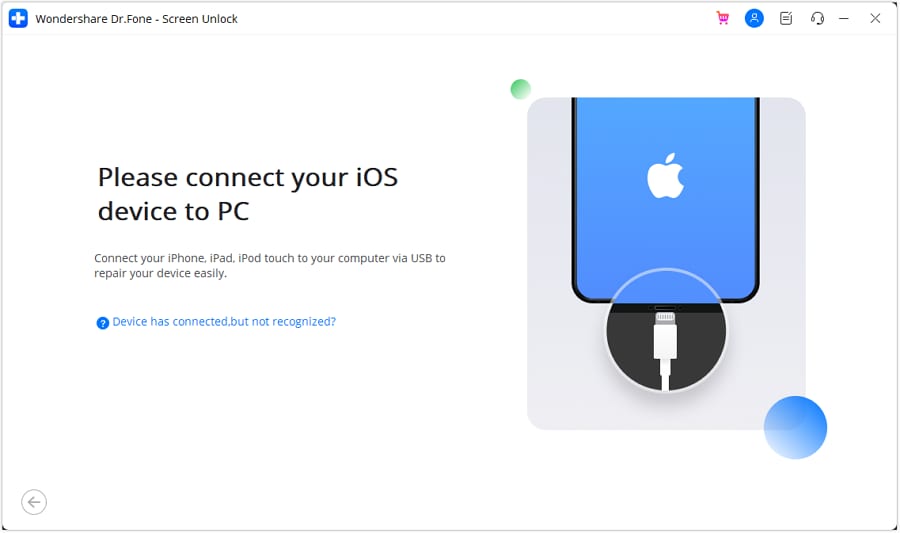
- Step 6: At this juncture, you have to determine whether your phone is a GSM or CDMA device. You can see this through Settings > General > About. When it’s a CDMA device, the cellular/SIM compatibilities will be disabled. However, you can still use the phone for its other uses. Once you click Unlock Now, you’ll see this pop-up warning. Click Got it!

- Step 7: Next, you’ll have to Jailbreak your device for a full iCloud activation lock bypass. Click the Jailbreak Guide or the Watch Video button on this pop-up.
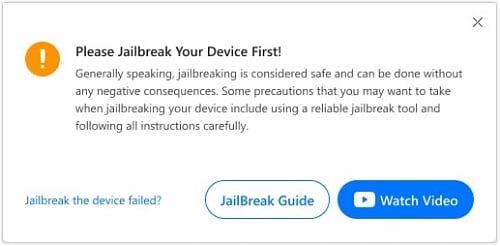
- Step 8: Once Dr.Fone confirms that your device is jailbroken, it will automatically start the bypass process.

- Step 9: Once the process is completed, click Done.

Conclusion
In this 2024 guide, you’ve explored various methods to check the iCloud Activation Lock status, an essential feature for iOS device security. Understanding how to verify this status, especially when buying or selling devices online. You’ve also learned how to remove them, so you know how to dispose of your devices properly. Managing your device’s iCloud Activation Lock status is key to ensuring its security and usability.
For those facing challenges with forgotten Apple ID credentials or needing to unlock their devices, Dr.Fone stands out as a reliable solution. It also has capabilities that extend beyond iCloud issues. Overall, it’s a valuable tool for a range of phone-related needs, so we recommend you to put it to use.
Tips: Are you searching for a powerful Screen Unlock tool? No worries as Dr.Fone is here to help you. Download it and start a seamless unlock experience!
What You Want To Know About Two-Factor Authentication for iCloud On your Apple iPhone 13 mini
Hackers have stolen millions of iCloud credentials in the past and demanded Apple pay for a ransom. This is starting to become a thing of the past as Apple implemented two-factor authentication to secure your Apple ID.
However, it’s not always perfect, as sometimes you need to get past two-factor authentication on your iCloud for various reasons. That’s why this article will teach you how to set it up and bypass two-factor authentication on iCloud yourself if you need to. Read further to learn more.

Part 1: What Is Two-Factor Authentication for iCloud?
Not to be confused with Apple’s two-step authentication, the new and more secure two-factor authentication on iCloud introduces push notifications on your iOS device to keep your data safe. With Apple’s two unique ways to prove your identity, hackers will find it harder to access your personal and financial data.
Switching to two-factor authentication rather than two-step is becoming more common nowadays as security measures are more advanced. You can always switch your security measure at any point, but remember that two-factor authentication is now an essential way to keep your data safe.

Part 2: What Are the Benefits of Two-Factor Authentication?
Setting up two-factor authentication is a secure way to protect your device against unauthorized access. Adding another layer to your username and password highly reduces the chances of hackers obtaining your account.
Here are some of the benefits of activating two-factor authentication on your device.
- Improved security - A second form of identification aside from your password reduces the chance for someone to gain access to your information.
- Interconnectivity to mobile engagement - Two-factor authentication from businesses provides users with a stronger login system to ensure their information is safe in the digital world.
- Reduces Fraud - Due to the rise of identity theft in recent years, businesses risk losing trust, brand equity, and credibility. A secure authentication system adds a layer of protection to keep you secure.
Part 3: How To Set up Two-factor Authentication for iCloud?
If you haven’t set up two-factor authentication yet on your iCloud, here are the steps to activate it right now.
Step 1: On your Apple iPhone 13 mini/iPad, go to Settings and tap your Apple ID profile at the top.

Step 2: Tap Password & Security and turn On Two-Factor Authentication.
Step 3: Enter a phone number to receive the two-factor code via an SMS or a phone call.
Step 4: Enter the 6-digit verification code received on your device and wait for the process the finish.
Note
You can turn off two-factor authentication within two weeks of enrollment. After that, it’s permanent.
Part 4: How To Turn Off Two-Factor Authentication on Your Apple iPhone 13 mini?
As previously stated, once two-factor authentication is active on iCloud, you only have a two-week window to deactivate it again.
To get past two-factor authentication on iCloud, Go to Settings > your name > Password & Security. Tap Two-Factor Authentication and turn it Off again.
Meanwhile, here are the steps to learn how to bypass 2-step verification on iCloud on the web.
Step 1: Go to the Apple ID sign-in page and log in with your Apple ID.
Step 2: Click Sign-In and Security > Account Security.

Step 3: Click Turn Off Two-Step Verification. Answer a security question you’ve set up previously to finish the process.
Part 5: Is It Possible to Bypass Two-Factor Authentication for iCloud?
If you’re wondering how to bypass two-factor authentication on iCloud, the answer is no, you can’t. However, if you don’t have access to your trusted device, you can have a code sent to your trusted phone number via an SMS or an automated phone call to prove to Apple that you own the iCloud account.
If this is impossible, you should request account recovery to regain access to your account.
The easiest way to prevent this issue is by adding another phone number to your Apple ID so you’ll always have a backup. Here’s how.
Step 1: On your Apple iPhone 13 mini, go to Settings and tap on your Apple ID > Password & Security.
Step 2: Tap Edit and choose to Add a Trusted Phone Number. You’ll have to enter your device’s passcode to continue.

Step 3: Enter your new phone number. Select a way to receive a verification code via sms or phone call and tap Send.
Step 4: Enter the verification code and wait for the process to finish.
Bonus Tips: Forgot Your iCloud Password? Here’s What To Do
Using special programs like Dr.Fone can help you recover your iOS device if you forget your iCloud password.
Dr.Fone’s key features are:
- Removes all types of iPhone locks such as Apple ID password, Face ID, Touch ID, and more.
- Bypass iCloud activation lock.
- Unlock your Apple iPhone 13 mini without carrier restrictions.
- Remove MDM profile / bypass MDM lock without data loss.
Here’s how to use Dr.Fone if you forget your iCloud password.
Step 1: Download and install Dr.Fone .

Step 2: Click Screen Unlock on the main program window. On the next screen, click Bypass Activate Lock.

Step 3: Click Start to initiate the process of unlocking your Apple iPhone 13 mini without an iCloud password.

Note
Your iPhone will need to be jailbroken before bypassing it using Dr.Fone.
After step 3, there are two possible outcomes for GSM and CDMA iPhone devices.
- If you own a GSM device, the unlocking will do no harm to your iOS device, and you can enjoy your Apple iPhone 13 mini as usual.
- If the Apple iPhone 13 mini is CDMA, you won’t be able to use the Apple iPhone 13 mini device for phone calls, cellular data, and iCloud of your new Apple ID.
Conclusion
Turning on your iCloud’s two-factor authentication is necessary for today’s high-tech society. It ensures your information is always secure and minimizes the risk of getting hacked or having your account stolen. Once two-factor is active on your Apple ID, Apple provides you with a two-week window to deactivate it if you change your mind.
Meanwhile, if you forgot your iCloud and have a hard time recovering your account, you can try using dedicated programs like Dr.Fone to unlock your iOS device in a few steps.
Also read:
- [New] Blurring the Line Between Still and Motion Art for 2024
- 2024 Approved Pushing Boundaries Spotlight on Top 6 Digital Innovators
- 2024 Approved Webinar Technology Hacks with No Financial Cost
- A Comprehensive Guide to iCloud Unlock From Apple iPhone 6 Plus Online
- How GPT-4 Is Set to Transform the Do-It-Yourself Sector
- How To Bypass Activation Lock On Apple Watch Or Apple iPhone 6s?
- In 2024, A Comprehensive Guide to iCloud Unlock On Apple iPhone 11 Pro Max Online
- In 2024, Bypass Activation Lock On iPhone 13 mini - 4 Easy Ways
- In 2024, Bypass iCloud Activation Lock with IMEI Code On iPhone XS
- In 2024, GIF Magic Transformations Without Extra Files Downloaded
- In 2024, How to Simulate GPS Movement in AR games On Honor X50i? | Dr.fone
- In 2024, How to Successfully Bypass iCloud Activation Lock from Apple iPhone 13
- In 2024, Secure & Document Your Zoom Conferences
- In 2024, The Ultimate Guide to Bypassing iCloud Activation Lock on iPhone 8 Plus
- In-Depth Look at the Latest Microsoft Surface Pro 7: Steady Quality and Recent Upgrades Unveiled
- Title: In 2024, Unlock Your Device iCloud DNS Bypass Explained and Tested, Plus Easy Alternatives On iPhone 13 mini
- Author: Lydia
- Created at : 2024-11-24 18:08:55
- Updated at : 2024-11-27 01:25:09
- Link: https://activate-lock.techidaily.com/in-2024-unlock-your-device-icloud-dns-bypass-explained-and-tested-plus-easy-alternatives-on-iphone-13-mini-by-drfone-ios/
- License: This work is licensed under CC BY-NC-SA 4.0.
